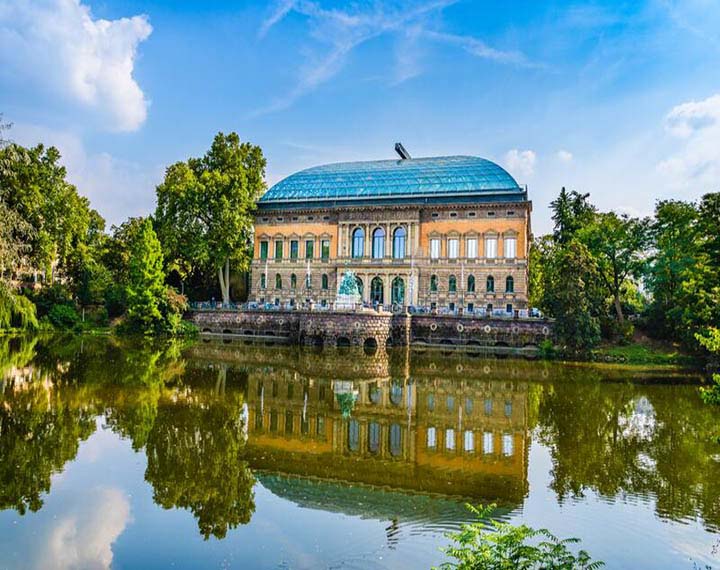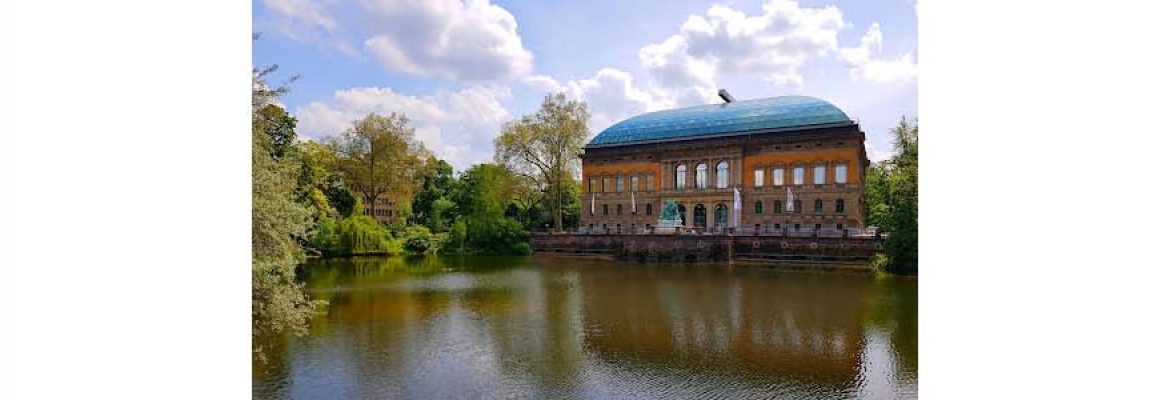 Ständehaus Park
Ständehaus Park
The 6-hectare park at the Ständehaus is a natural green island in the middle of the city. The winding paths under the tall trees offer surprising views of the city silhouette, the Estates House and the water surfaces. Kaiserteich and Schwanenspiegel make you forget that the ponds are also part of a stream. The southern Düssel finds its way here before it reaches the Spee’schen Graben under Haroldstraße and finally disappears in a canal to the Rhine at the Stadtmuseum.
The walk across the city from Graf-Adolf-Platz, past the swan mirror along Spee’schen Graben to the Stadtmuseum has historical dimensions. It follows the former fortress boundaries of Düsseldorf and shows the dimensions of the wall and moat system that was intended to protect the city center. The 1801 Peace Treaty of Luneville enacted the demolition of the fortifications. Far-sighted urban planners took advantage of the demolition and laid out parks and gardens with Napoleon’s approval. The famous master gardener Maximilian Weyhe cleverly added the remains of the fortification system to today’s complexes at the Ständehaus and Spee’schen Graben and formed a green promenade. For the show of the European garden region EUROGA 2002plus, the park at the Ständehaus was extensively renovated according to the plans of 1819.
The Estates House
Between 1876 and 1880, the Berlin government had the Estates House built as the parliamentary and administrative building of the Rhenish Provincial Parliament in the visual axis of Hohe Strasse. The Cologne architect Julius Raschdorff was commissioned to design the neo-Renaissance style building. When building the Estates House, the shape of the park was largely taken into account. Architecture and plants form such a successful unit that the State Conservator placed the Estates House complex under ensemble protection.
After the Second World War, the Estates House functioned as the parliament building for the state of North Rhine-Westphalia until 1988.
After extensive renovations, it has been used twice since 2002: as a representation of the state and as an outstanding location for the art collection of North Rhine-Westphalia, which opened a branch for 21st-century art here with “K21”. The arch extends to the surrounding park, which now also offers space for contemporary art in addition to existing sculptures, such as the fountain sculpture “Father Rhine and his daughters”. In addition to pictures, sketches and photos, the exhibition in the Ständehaus includes a large number of multimedia objects. The visitors’ senses are challenged by experimental video works, sound worlds and screen projects.


